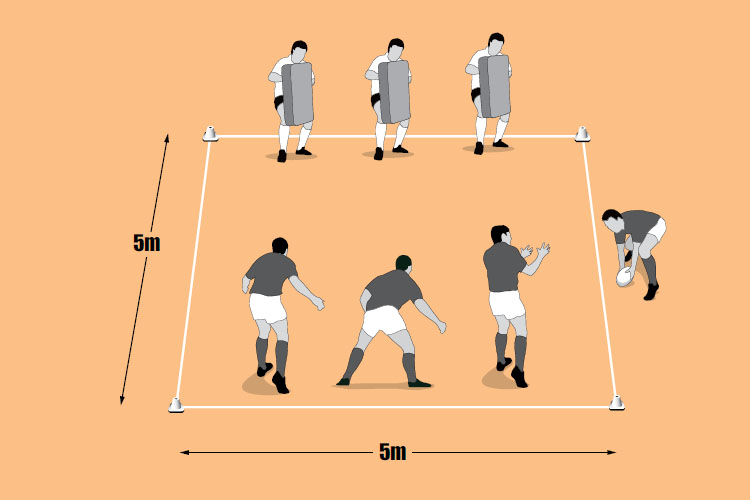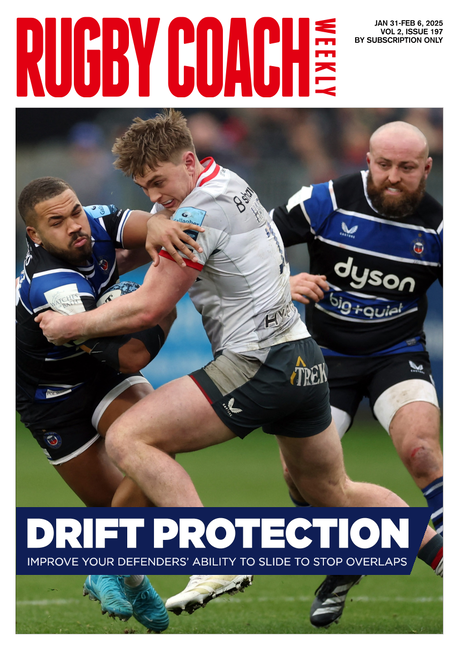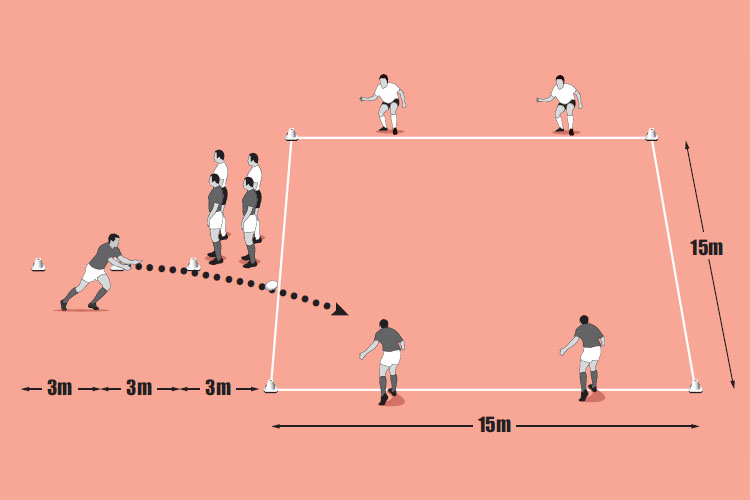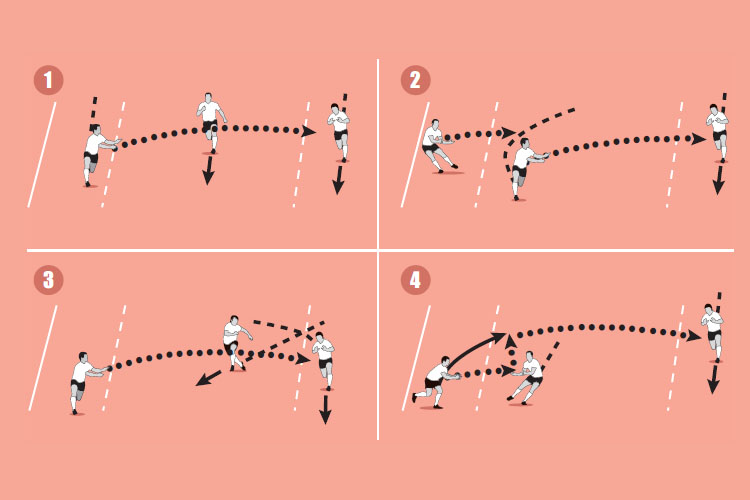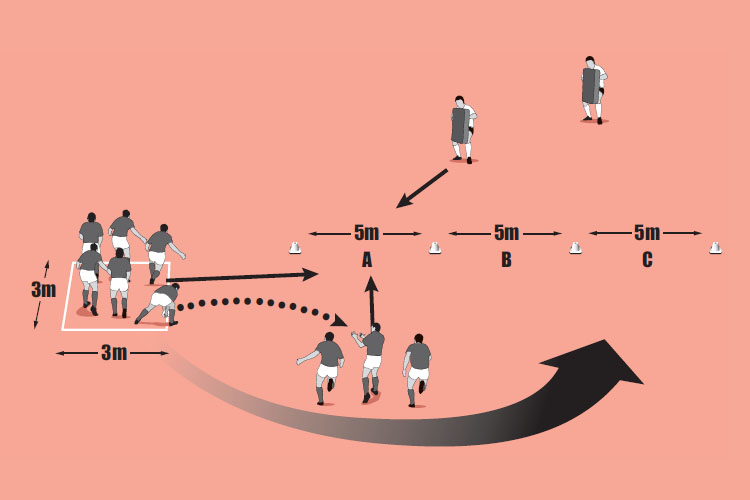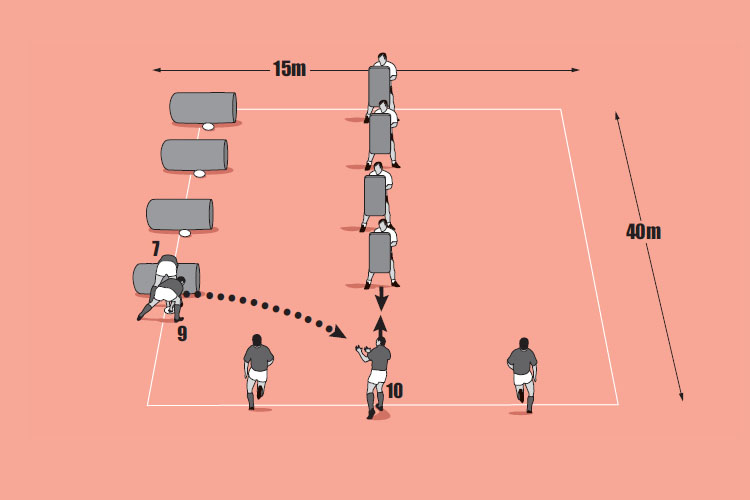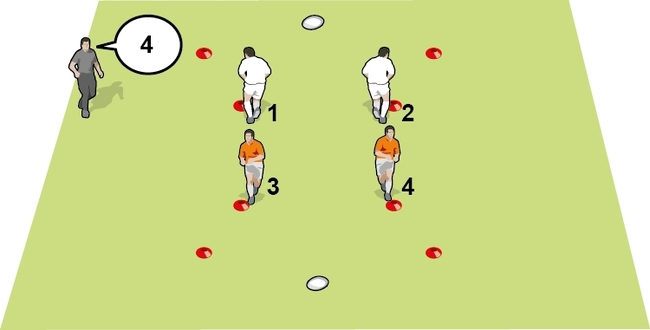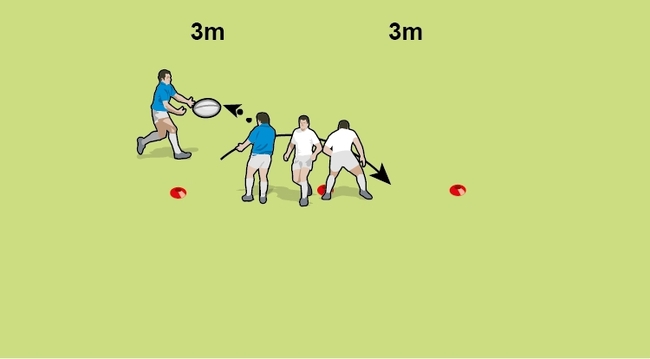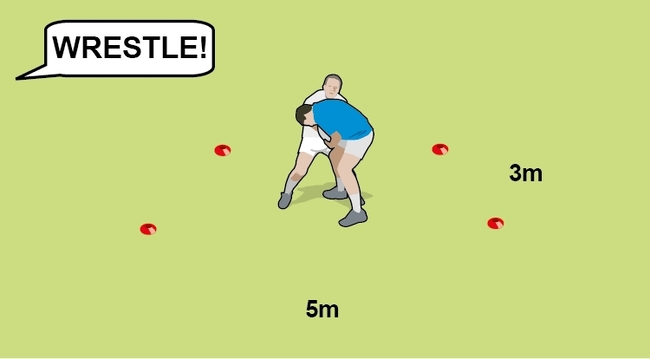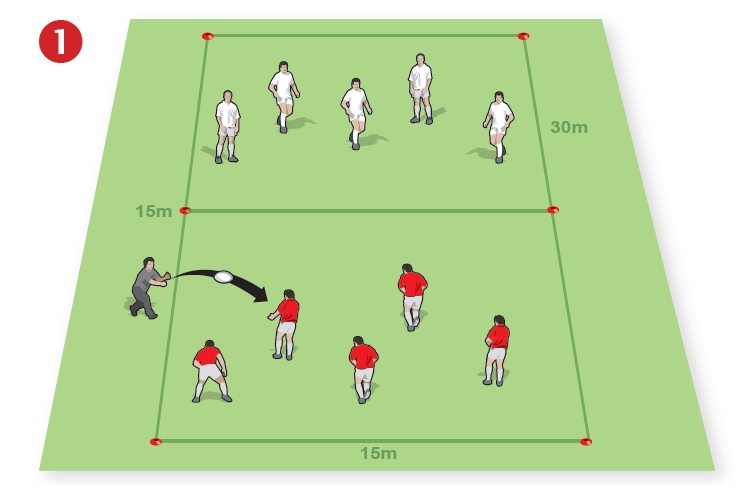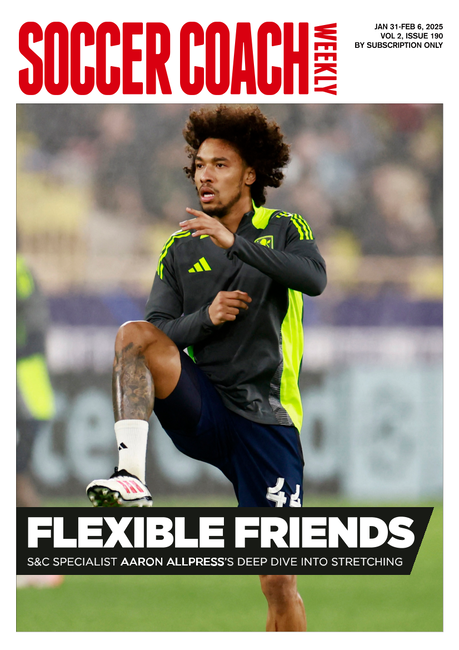Break through the defence
Sometimes your players will have no choice but to go through a defence because it is well organised or there is no time to pass the ball out. Your players will need to use good footwork, body positions and support players to win the ball back. This is a bread and butter session.
Warm up time: 5-7
Session time: 8-10
Development time: 10-15
Game time: 10-15
Warm down time: 5-8
What to think about
Combine work you have done previously on footwork, body positions and rucking. In your warm-up you can focus on one or two of these factors and then check the players are using them in the main activities. One of the main issues might be how players hold the ball going into contact. Ideally they keep it away from defenders. They can either hold the ball in two hands, close to the body, or in one hand using the other hand to fend.set-up
- Attack the edges of defenders, not the middle.
- Keep driving forward, don’t twist in contact.
- Look after the ball and if you have to go to ground, fight to get a better body position to place the ball.
What you get your players to do
Put three ruck pad holders at one end of a 5m square (see picture 1). Instruct a feeder to pass to any of three attackers on the opposite side of the box. The ball carrier has to step to the edge of the ruck pad holder to get through. If he is blocked then he either goes to ground, offloads or gets driven through the gap (see picture 2). Make sure the feeder does not always pass to the middle player.Development
Take away the middle ruck pad, so the defender can tackle. That should encourage the ball carrier to aim away from the middle. Change the width of the box, so attackers have more or less room to manoeuvre.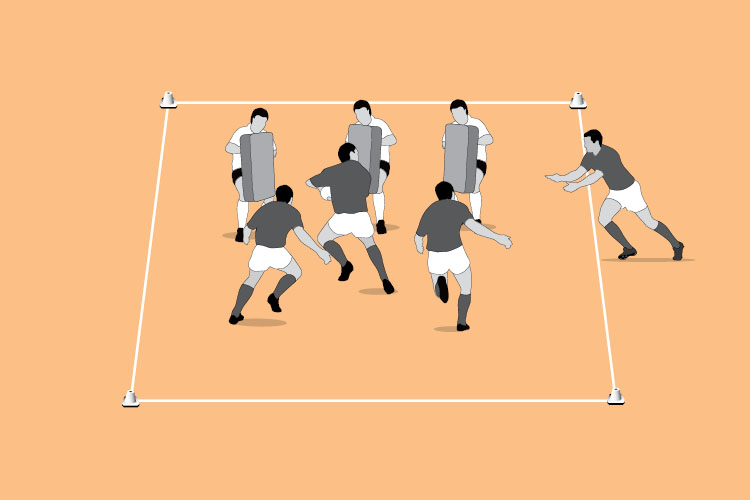
Game situation
Set up three attackers, a feeder and three defenders in a 10m wide channel, as in picture 3. Play live rugby until the ball is turned over or the attack makes a break. The feeder can run with the ball, meaning the inside defender has to guard the ruck pad. You can check that the attack changes angles and offers speed onto the ball. Work on the defence coming forward from the feed as well.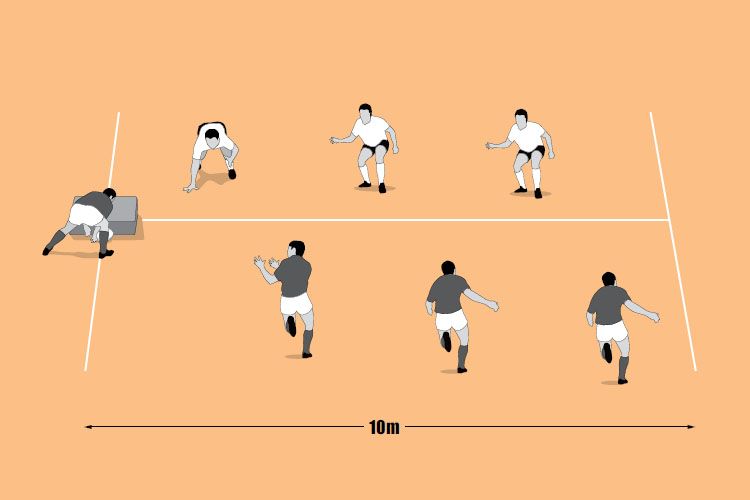
What to call out
- “Lots of talk into the contact”
- “Get low through the contact”
- “If you are not the ball carrier, keep your depth to offer better options”
Newsletter Sign Up
Coaches Testimonials

Gerald Kearney, Downtown Las Vegas Soccer Club

Paul Butler, Florida, USA

Rick Shields, Springboro, USA

Tony Green, Pierrefonds Titans, Quebec, Canada
Subscribe Today
Be a more effective, more successful rugby coach
In a recent survey 89% of subscribers said Rugby Coach Weekly makes them more confident, 91% said Rugby Coach Weekly makes them a more effective coach and 93% said Rugby Coach Weekly makes them more inspired.
Get Weekly Inspiration
All the latest techniques and approaches
Rugby Coach Weekly offers proven and easy to use rugby drills, coaching sessions, practice plans, small-sided games, warm-ups, training tips and advice.
We've been at the cutting edge of rugby coaching since we launched in 2005, creating resources for the grassroots youth coach, following best practice from around the world and insights from the professional game.
